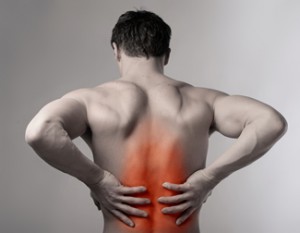 The term “chronic pain” is generally used to describe pain that lasts more than three to six months, or beyond the point of tissue healing. Chronic pain is usually less directly related to identifiable tissue damage and structural problems.
The term “chronic pain” is generally used to describe pain that lasts more than three to six months, or beyond the point of tissue healing. Chronic pain is usually less directly related to identifiable tissue damage and structural problems.
Back pain can develop anywhere from the neck to the lower spine. The pain can be localized or spread across a wide area and radiate from a central point.
There are at least two different types of chronic pain problems – chronic pain due to an identifiable pain generator (e.g. an injury), and chronic pain with no identifiable pain generator (e.g. the injury has healed).
Chronic pain due to an identifiable pain generator
This type of chronic pain is due to a clearly identifiable cause. Certain structural spine conditions (for example, degenerative disc disease, spinal stenosis and spondylolisthesis) can cause ongoing pain until successfully treated. These conditions are due to a diagnosable anatomical problem.
Chronic pain with no identifiable pain generator
This type of pain continues beyond the point of tissue healing and there is no clearly identifiable pain generator that explains the pain. It is often termed “chronic benign pain”.
Causes
There can be many causes of chronic back pain. The pain can come from the bones joints, muscles, nerves or organs.
It is believed that as much as 80% of back pain can be attributed to lack of exercise and poor physical fitness. Strong muscles, especially the abdominal muscles, support the back and help distribute weight when you lift something heavy. Back and abdominal muscles that lack strength and tone cause more stress to be placed on the ligaments.
Symptoms
- A deep, aching, dull or burning pain in one area of the back or travelling down the legs.
- Numbness, burning or pins and needles sensation in the legs.
- Difficulty in performing regular daily activities.
- Lasts a long time, and is not relieved by standard types of medical management.
Surgery
Surgery for chronic pain isn’t common. It’s usually considered only after other treatments have failed or if it is considered medically necessary.
Implanted pain control systems
Implanted pain control systems involve inserting devices under your skin or elsewhere in your body. The devices use medicine, electric current, heat, or chemicals to numb or block pain.
- Intrathecal drug delivery sends medicine to the area of your pain.
- Electrical nerve stimulation uses electric current to interrupt pain signals.
- Nerve ablation destroys or removes the nerves that are sending pain signals.
- Chemical sympathectomy uses chemicals to destroy nerves. This treatment may be used for a type of chronic pain called complex regional pain syndrome, which affects the nervous system.
